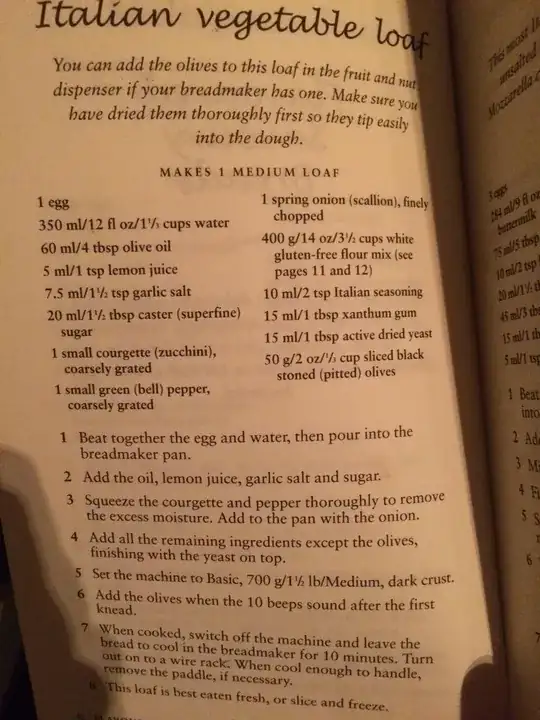I have been trying to make gluten-free bread in my bread maker for a few times now. It always fails. It doesn't rise how a funny shape (still the shape from kneading) and doesn't cook very well inside (very dense).
I know there are lots of posts about this, but I have already made sure:
- the yeast doesn't touch the water or the salt
- the last yeast I tried was Hovis fast action yeast
- should I use one rising cycle (this is the setting for gluten free bread)
- I've put xantan gum as required
Anything else I can check?
From this otherwise great recipe book. (I did leave out the onion and pepper and replaced the sugar with agave)
[ ] 1
] 1
